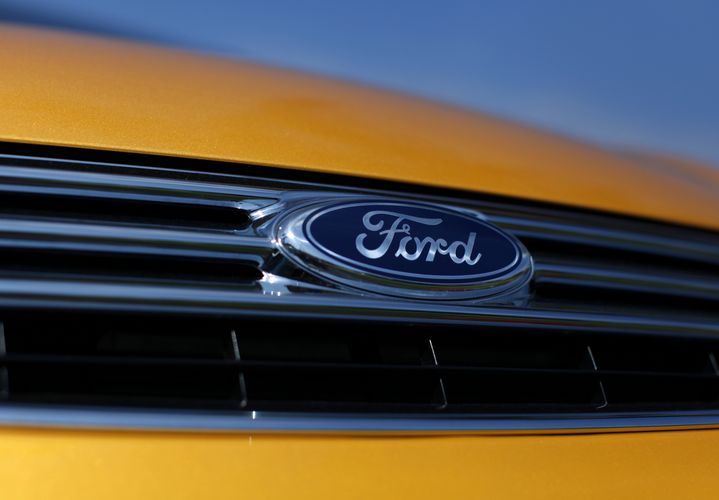US auto groups planning to diversify their funding have begun revving their engines amid rising confidence in the wake of Ford’s upgrade to investment-grade status by Moody’s.
To view the digital version of this report, please click here.
Sentiment towards the US car sector has strengthened over the past few months and the move by Moody’s was widely expected in the wake of a similar upgrade by Fitch in April.
Ford has taken full advantage of the positive signals, raising funds from its diverse and growing crowd of believers. It priced its first Dim Sum bond a month before the Fitch upgrade, and received an overwhelming response from investors. The carmaker attracted orders worth Rmb10bn (US$1.56bn) from 120 accounts for its offshore renminbi bond issue, far exceeding the estimated target of Rmb500m–Rmb750m. The book reached Rmb1bn within an hour of opening.
The three-year deal was the first junk-rated bond issue from a non-Chinese company in the offshore renminbi market. “The well-known name and a reasonably attractive yield, plus the improving rating prospects were the drivers behind the deal,” said a banker close to the transaction.
The strong demand allowed Ford to fix the yield at 4.875%, well inside initial indications of 5.25%–5.50%.
A month after the Fitch upgrade, Ford Motor Credit reached a new milestone when it broke through the 3.00% coupon level for the first time, on a US$1.25bn three-year issue. The roughly 225 investors in the book held fast, even though the concession to a fair value level of 2.55% had gone from an initial 45bp to 20bp by the time of pricing.
Tightening continues
CDS and bond spreads tightened once the announcement was made simply because the upgrade is expected to be a huge transformational event for the company.
The carmaker is now in a position to reclaim assets, move from junk bond to investment-grade indices and attract investors which might have been previously constrained by the lack of investment-grade status.
“While not unexpected, the Moody’s upgrade is significant in that Ford’s cross-over from high-yield now opens doors to institutional investors that otherwise could not hold Ford debt. Considering the US$100bn in debt at a total company level, this change translates to new opportunities in the investor community, depending on the timing of a potential S&P upgrade,” said a Janney Credit Research report.
The collateral Ford pledged to its banks – including the famed blue oval logo – will effectively be controlled by Ford once again. The company’s Ford Upgrade Exchange Linked (FUEL) bonds, which are asset-backed securities, will revert to senior unsecured bonds as a result of the rating actions.
It also changes the status of the company’s debt from secured to unsecured and reduces its borrowing costs.
For example, Ford entered into a JP Morgan-led amendment early this year that allowed the company to extend maturities and increase the size of an existing revolver from US$8.9bn to US$12bn.
Pricing on the amended revolver is on a grid tied to ratings. After the collateral release date, or when the company’s long-term unsecured debt is rated investment grade by at least two of the three ratings agencies and the company’s term loans have been paid in full (which occurred in 2011), pricing drops to Libor plus 175bp with a 25bp facility fee. Prior to earning investment grade status (and after the amendment) the loan paid Libor plus 200bp with a 25bp facility fee.
On June 1 both Ford companies will move into Barclays Investment Grade credit index. With about US$25bn of index-eligible debt (excluding US$2.5bn of FUEL notes), it is estimated that they would represent 1% of the corporate credit index and about 53% of the investment-grade automotive index.
“It could have an impact on the broader market as Ford accounts for nearly 3% of high-yield indices. If managers decide to sell Ford since the investment thesis has played out it could bode well for other BB-rated names since those proceeds will have to be reinvested,” said John Fekete, high-yield portfolio manager at Crescent Capital.
With agencies more positive about the auto industry following several years of turmoil, expectations are that General Motors may also now benefit from an upgrade. Moody’s affirmed the Ba1 rating for General Motors Co. and maintained the positive outlook for the company. Moody’s noted that “GM’s credit quality continues to improve and the company remains on track to regain an investment grade credit rating over the course of the next 12 months.”
For Ford, which lost its investment-grade rating in 2005 and narrowly escaped bankruptcy during the 2008 crisis, there is good reason to celebrate. The fact that the global bond market is navigating such challenging conditions at the moment makes this an even more impressive outcome for the carmaker.

